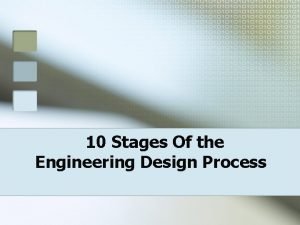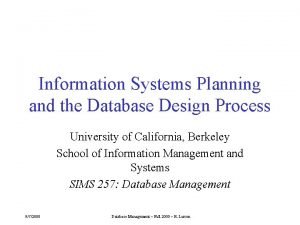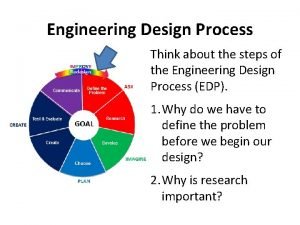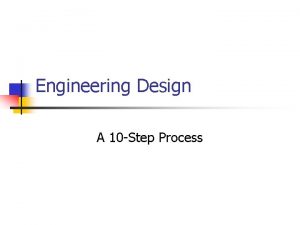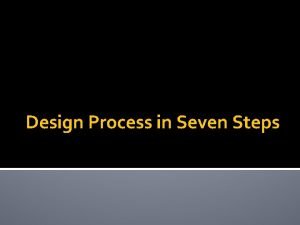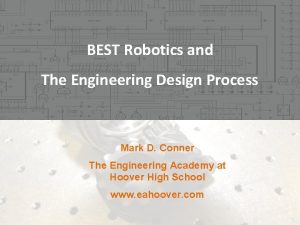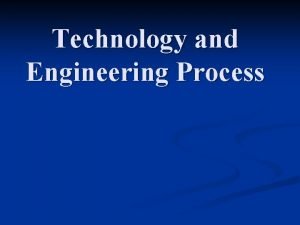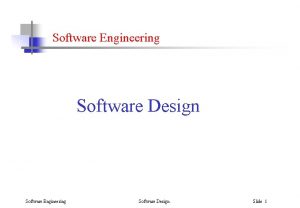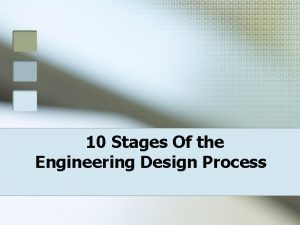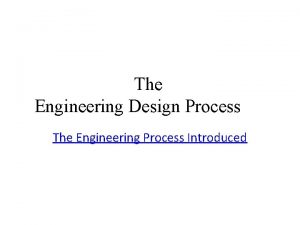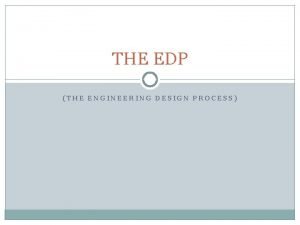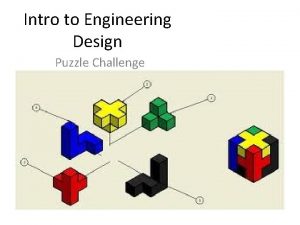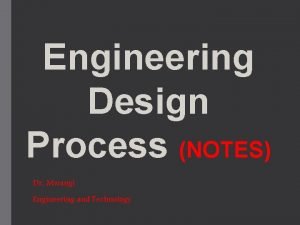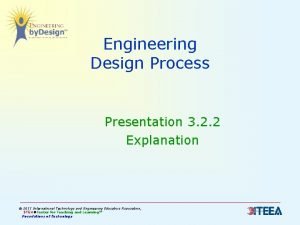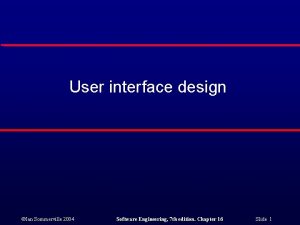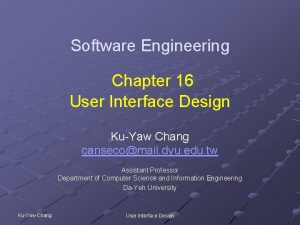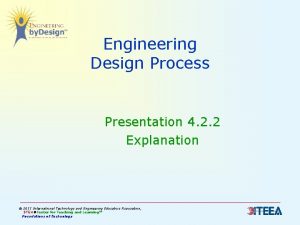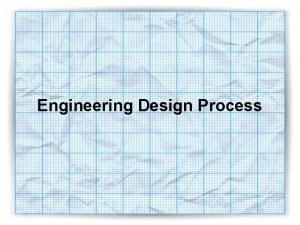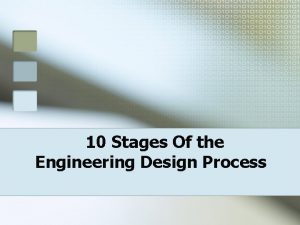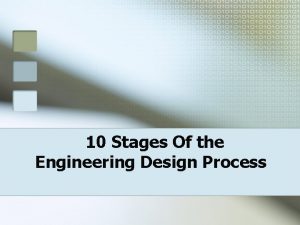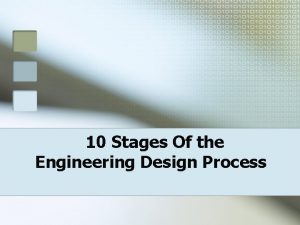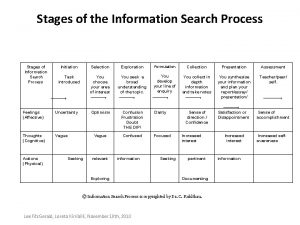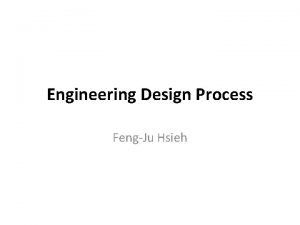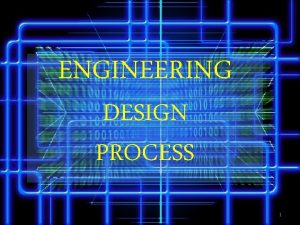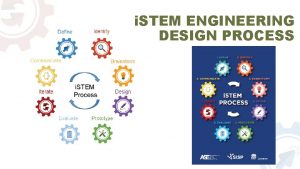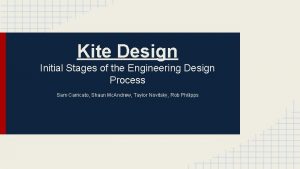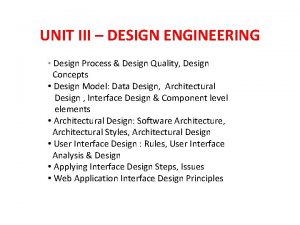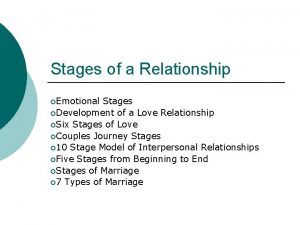Engineering Design Process 10 Stages Of the Engineering


















- Slides: 18

Engineering Design Process






10 Stages Of the Engineering Design Process www. okrobotics. org/

Design (Definition) • The process of originating and developing a plan for a new object • Requires research, thought, modeling, interactive adjustment, and re-design

1. Identify the Problem • Engineers are Problem Solvers • Understand the scope and the nature of the problem • Identify the correct issues and background of the problem

2. Define Working Criteria and Goals • Establish preliminary goals • Develop working criteria to compare possible solutions – Specifications – Constraints

3. Research and Gather Data • Stay consistent with working criteria while researching • Use resources to help research including: Internet, Library, newspaper, etc. • Keep info found through all steps of the design process and add to it

4. Brainstorm and Generate Creative Ideas • Develop as many creative ideas as possible – No idea is a bad idea – Document all ideas – Combine ideas to create new ideas – Do not evaluate • If time permitted, hold a second session to give people time to consider additional options • Goal: Long list of ideas!

5. Analyze Potential Solutions • Eliminate duplicate ideas • Clarify ideas • Select ideas to analyze in more detail – Qualitative analysis – Quantitative analysis – Democratic analysis

6. Develop and Test Models • Develop models for the selected solutions • Types of models: descriptive, functional, mathematical, computer, and scale. • Test each model against working criteria and goals • Test for functionality and performance

7. Make the Decision • Evaluate the results of testing to determine the solution to use • If none of the solutions are ideal, return to stage 4 or 5 • Once a solution is selected, continue to stage 8

8. Communicate and Specify • Document the design’s specifications and measurements and communicate to all groups • Communication between groups is especially important in this stage – Meetings – Presentations – Reports – Drawings

9. Implement & Commercialize • Final design revisions • All groups should agree on the proposed project, including: Management, Technical, Business, and legal support representatives • Production

10. Post-Implementation Review and Assessment • Review the product’s performance • Assess the product’s strength and weaknesses and document • Make suggestions for future improvements
 Stages of engineering
Stages of engineering What is database design process
What is database design process Engineering design process quiz answers
Engineering design process quiz answers Basic engineering design process
Basic engineering design process What are the steps for the engineering design process
What are the steps for the engineering design process 10 step design process
10 step design process What are the 7 steps of the engineering design process?
What are the 7 steps of the engineering design process? Engineering design process
Engineering design process Engineering design process song
Engineering design process song Design process in software engineering
Design process in software engineering The 10 steps of the engineering design process
The 10 steps of the engineering design process Who is it from
Who is it from What are the steps of edp
What are the steps of edp Engineering cube puzzle
Engineering cube puzzle Engineering design process notes
Engineering design process notes Scientific method vs engineering design process
Scientific method vs engineering design process User interface design process in software engineering
User interface design process in software engineering Interface design in software engineering
Interface design in software engineering Scientific method vs engineering design process
Scientific method vs engineering design process
